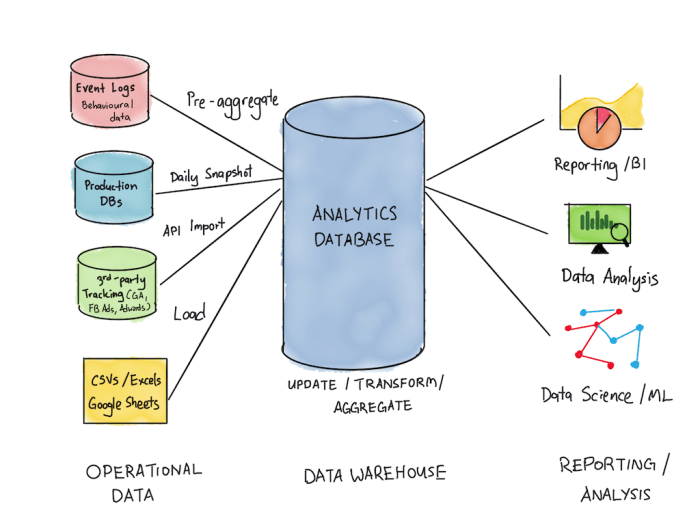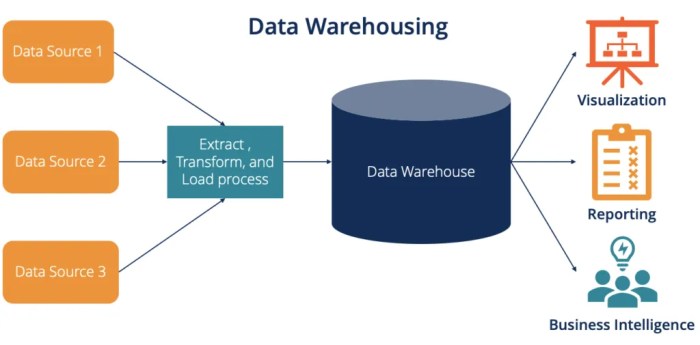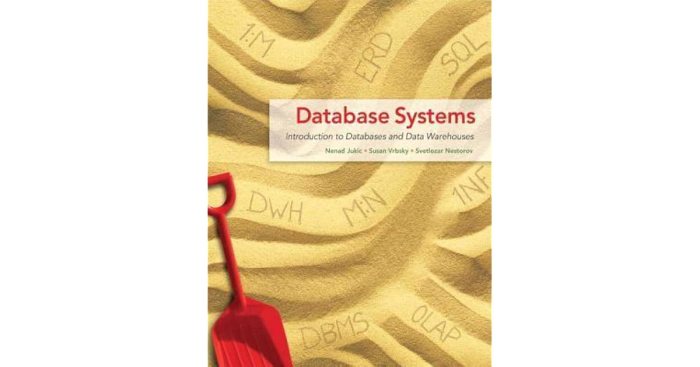Database systems introduction to databases and data warehouses, the cornerstone of modern data management, empowers organizations to harness the power of information. This comprehensive guide delves into the fundamental concepts, types, design principles, querying techniques, and administration practices that underpin effective database management.
Database systems provide a structured and efficient framework for storing, organizing, and retrieving data. They play a critical role in managing vast amounts of information, enabling businesses to make informed decisions, optimize operations, and gain valuable insights from their data.
Introduction to Database Systems
Database systems are computerized systems that manage and store large amounts of data. They are essential for data management, as they allow organizations to store, organize, and retrieve data efficiently and effectively.
Database systems consist of several components, including a database management system (DBMS), a database schema, and data. The DBMS is the software that manages the database, while the database schema defines the structure of the data. Data is the actual information stored in the database.
Benefits of Database Systems
- Data integrity:Database systems ensure that data is accurate, consistent, and complete.
- Data security:Database systems protect data from unauthorized access and modification.
- Data sharing:Database systems allow multiple users to access and share data simultaneously.
- Data backup and recovery:Database systems provide mechanisms for backing up and recovering data in case of hardware or software failures.
- Data analysis:Database systems provide tools for analyzing data and generating reports.
Types of Databases

There are several different types of databases, each with its own characteristics and use cases.
Relational Databases
Relational databases store data in tables, where each row represents a record and each column represents a field. Relational databases are widely used for a variety of applications, such as transaction processing, data warehousing, and business intelligence.
NoSQL Databases
NoSQL databases are a type of non-relational database that does not use the traditional table structure. NoSQL databases are designed to handle large volumes of data and are often used for applications such as social networking, e-commerce, and mobile computing.
Hierarchical Databases
Hierarchical databases store data in a tree-like structure, where each record can have multiple child records. Hierarchical databases are often used for applications such as document management and file systems.
Data Warehousing Concepts: Database Systems Introduction To Databases And Data Warehouses

Data warehouses are central repositories of data that are used for decision support and business intelligence.
Difference between Data Warehouses and Operational Databases
- Data warehousesare designed for analytical purposes, while operational databasesare designed for transaction processing.
- Data warehousesstore historical data, while operational databasesstore current data.
- Data warehousesare typically updated in batch mode, while operational databasesare updated in real time.
ETL Process, Database systems introduction to databases and data warehouses
The ETL process (extract, transform, load) is used to extract data from operational databases, transform it into a format suitable for analysis, and load it into the data warehouse.
Database Design

Database design is the process of creating a database schema that meets the specific needs of an organization.
Principles of Database Design
- Data normalization:Data normalization is the process of removing redundancy from data.
- Data modeling:Data modeling is the process of creating a graphical representation of the data.
- Data integrity:Data integrity is the process of ensuring that data is accurate, consistent, and complete.
Database Querying
Database querying is the process of retrieving data from a database.
SQL
SQL (Structured Query Language) is a standard language for querying relational databases.
Basic SQL Queries
- SELECT:The SELECT statement is used to retrieve data from a table.
- INSERT:The INSERT statement is used to add new data to a table.
- UPDATE:The UPDATE statement is used to modify existing data in a table.
- DELETE:The DELETE statement is used to remove data from a table.
Advanced Querying Techniques
- Joins:Joins are used to combine data from multiple tables.
- Subqueries:Subqueries are used to embed one query within another query.
Database Administration

Database administration is the process of managing and maintaining a database.
Tasks and Responsibilities of a Database Administrator
- Database security:Database administrators are responsible for ensuring that the database is protected from unauthorized access and modification.
- Database backup and recovery:Database administrators are responsible for backing up the database and recovering it in case of hardware or software failures.
- Database performance tuning:Database administrators are responsible for tuning the database to improve its performance.
Question & Answer Hub
What are the benefits of using database systems?
Database systems offer numerous benefits, including improved data organization, enhanced data security, increased data accessibility, and support for complex data queries.
What are the different types of databases?
Common types of databases include relational databases (e.g., MySQL, PostgreSQL), NoSQL databases (e.g., MongoDB, Cassandra), and hierarchical databases (e.g., XML databases).
What is the role of a database administrator?
Database administrators are responsible for managing and maintaining database systems, ensuring data integrity, security, and performance.